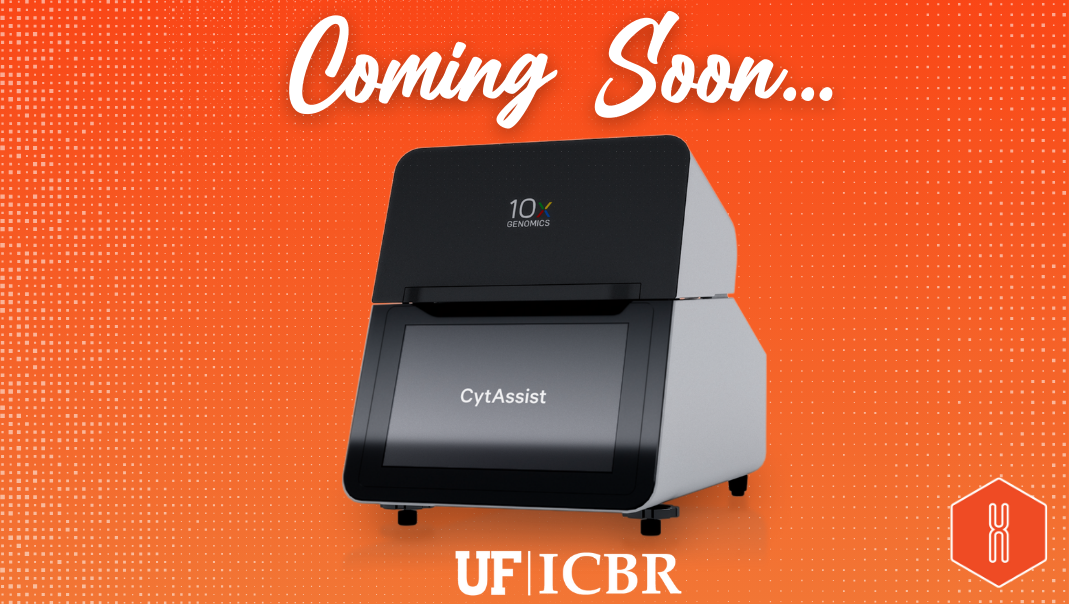Advancing Spatial Transcriptomics Research with 10x Genomics Visium CytAssist
Advancing Spatial Transcriptomics Research with 10x Genomics Visium CytAssist
The UF Interdisciplinary Center for Biotechnology Research (ICBR) is excited to announce that the 10x Genomics Visum CytAssist will be arriving to our Gene Expression and Genotyping core in May to help advance research in understanding mRNA and protein expression in normal and diseased tissue.
The relationship between cells and their relative locations within tissue is critical to understanding normal development and disease pathology. Spatial transcriptomics (SpTx) is a groundbreaking molecular profiling method that allows scientists to measure gene activity in a tissue sample and map where the activity is occurring. Already this technology is leading to new discoveries that are proving instrumental in helping scientists gain a better understanding of biological processes and disease. Currently the ICBR offers the 10X Genomics VISIUM slide platform for performing SpTx. However, the critical rate limiting step in this process is the attachment of fixed tissue to the VISIUM slides. Inconsistent and failed attachment of tissue to the VISIUM slide is costly and has limited the growth of SpTx usage in the ICBR. Manual processing of fixed tissue is inconsistent and very dependent upon tissue type and which fixation/processing methods are used.
The 10X Genomics VISIUM CytAssist is a compact instrument designed to simplify the Visium workflow by facilitating the transfer of transcriptomic probes from standard glass slides to Visium slides, enabling whole transcriptomic spatial profiling insights across entire tissue sections, and expanded compatibility with FFPE and/or FF samples. In the VISIUM CytAssist workflow sectioning, tissue preparation, staining (H&E or IF), and imaging take place on a standard glass slide. After probe hybridization, two standard glass slides and a Visium slide with two Capture Areas are placed in the CytAssist instrument so that the tissue sections on the standard slides can be aligned on top of the Capture Areas. Within the instrument, a brightfield image is captured to provide spatial orientation for data analysis, followed by transfering of transcriptomic probes to the Visium slide. The remaining steps, starting with probe extension, follow the standard Visium workflow occur outside of the CytAssist instrument.
ICBR is excited to announce that the 10x Visium CytAssist will be available in the ICBR Gene Expression & Genotyping Shared Resource sometime in May. For more information, please contact Dr. Yanping Zhang at ICBR-GeneExpression@ad.ufl.edu or (352) 273-8043.


